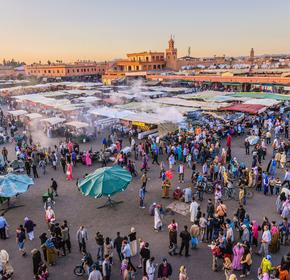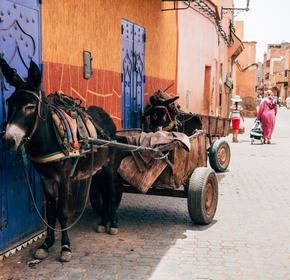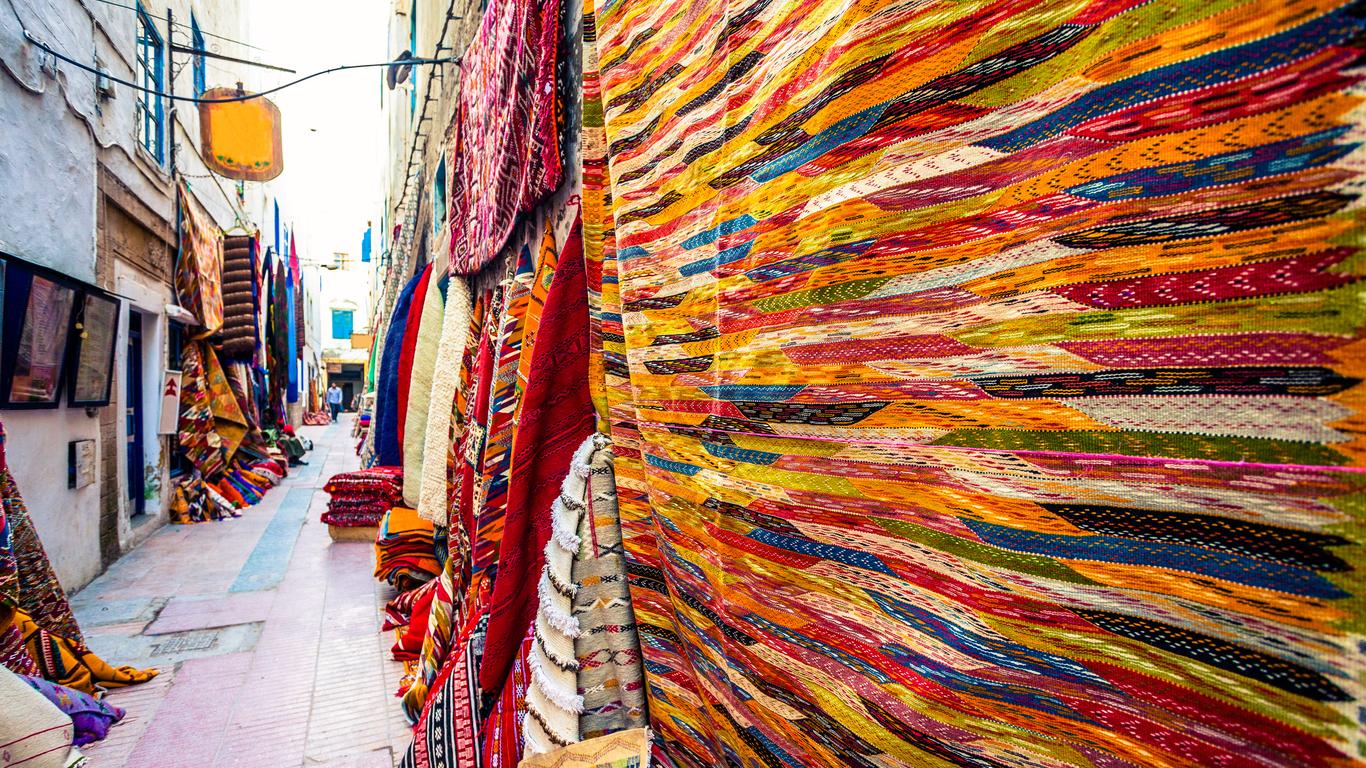
Marrakech travel guide
Marrakech Tourism | Marrakech Guide
You're Going to Love Marrakech
Ancient, cosmopolitan Marrakech is a city that bursts with life as a religious, business, and cultural center of the region, and is renowned for its open and welcoming spirit.
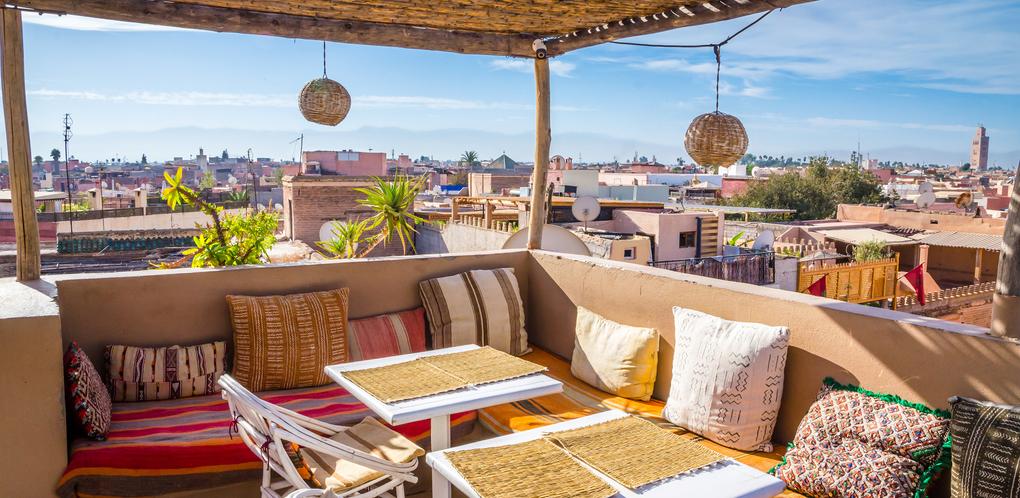
Medina is the old city that lies inside the sandstone walls that gave Morocco the nickname "Ochre City," and is a place of narrow, winding streets and street markets that operate at a hectic pace. Modern suburbs surround the ancient hub, extending in all directions and putting a contemporary face on the city.
Marrakech is set in the dramatic shadow of the Atlas Mountains. The chaos of the markets gives way to the delightful serenity of the city's many spas and green spaces. There are numerous lush gardens dating from the Imperial era, including Majorelle Gardens and Menara Gardens.
Top 5 Reasons to Visit Marrakech
1. The Golden Age
Marrakech is one of the four imperial cities of the ancient Berber empire of Morocco, and has been inhabited since the Neolithic Period. There are many monuments to its glorious past, from the red walls constructed in 1122 to the glittering El Badi Palace, built in 1578, Koutoubia Mosque completed in 1199, the largest mosque in the city, and much more.
2. Shopping, Souk Style
Souk Semmarine and rue Mouassine lead you to the magical world of souks - traditional open markets - in Medina. North of the Jemaa el-Fnaa, you'll find a network of souks that offer everything from rugs to textiles to jewelry on offer - with haggling a must. The Ets Bouchaib Complexe D'Artisanat on the Rue de la Kasbah is a unique department store where you'll find elegant antiques and other wares unique to the region.
3. Fabulous Cuisine
At the crossroads of Arabic, Andalusian, Mediterranean, and Berber culture, the cuisine of Marrakech is rich and flavorful. Couscous is a staple, along with olive oil, and the fragrant spices that grow in the region, like mint, cinnamon, ginger, and many more. Traditional dishes include the tagine, or a kind of spicy hot pot stew, and pastilla, a spicy meat pie in flaky pastry.
4. The Spa Experience
The spa or hammam is an ancient tradition in Marrakech, where you can try out ancient beauty rituals. Spas are everywhere, including most of the city's popular hotels and riyad. Along with luxury private spas, there are public spas and baths like the Hammam Dar el-Bacha, the city's largest, and where you may just find staff from the royal palace.
5. Natural Wow
Marrakech is located just north of the Atlas Mountain range, where you can ski on the slopes or hike in the foothills. To the south, you'll find the Ourika River valley, where you can hike in the shadow of snow-covered peaks.
What to do in Marrakech
1. Jamaa el Fna: The Spectacle of Life
Your journey through Marakkesh starts at the vibrant Djemaa el-Fna square, pulsing with the excitement of social life. Vendors left and right offer enticing street food and refreshing orange juice, while less conventional businesses are run by snake charmers, fortune tellers, and henna artists. With the minaret of Koutoubia Mosque standing tall in the background, dancers and musicians flow back and forth in a constant celebration of Berber and Moroccan culture.
2. Medina: Mystical Maze
Endless alleyways and ancient streets make up the alluring center of Marrakesh. Within thick walls and behind the gorgeous gates of the riads, a frenzy of city life plays out as it has for centuries. The Souks, the largest ensemble of markets in Morocco, are dedicated to every product imaginable, from carpets to ceramics to fabric. Tanneries prepare perfectly dyed leather with traditional techniques, and the archaic Ben Youssef Madrasa school exhibits the pinnacle of Islamic art and architecture.
3. Majorelle Garden: Oasis in Blue
Garden and Museum at once, the Jardin Majorelle is divine. Twelve acres of local flora are landscaped against cobalt blue walls. Also home to a variety of fascinating birds, the gardens are a colorful treat for all living things. The Islamic Art Museum of Marrakesh also beckons visitors to appreciate the history that influenced the garden's pristine design. For those seeking peace and space over crowds the Menara Gardens offer a glorious alternative.
4. Bahia Palace: Place of All Intrigues
Islamic architecture reaches impressive levels of refinement in the 19th-century Bahia Palace. Let the beautiful symmetry of engravings and mosaics wash over you, and explore the vast and luscious harem once home to Grand Viziers and their countless wives. For a history lesson going even further back, visit the timeworn El Badi Palace, quiet and magical.
5. Toubkal National Park: Climb the Atlas
Berber communities have lived in the steep valleys of the Atlas Mountains for centuries, and hiking excursions from the city of Imlil take you in their footsteps, through old-age villages suspended in time. For ambitious mountaineers, the peak of Djebel Toubkal presents an exciting climb up the tallest point in North Africa.

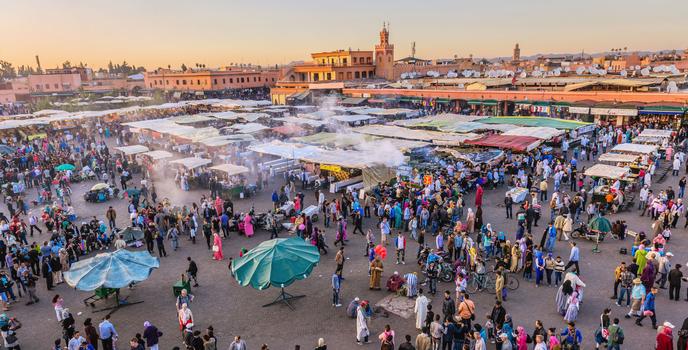

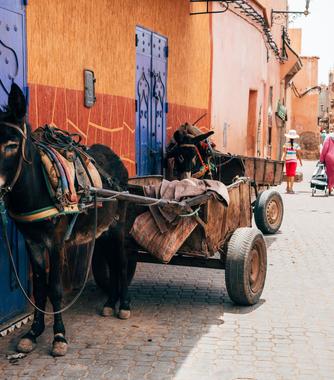

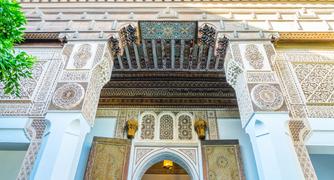

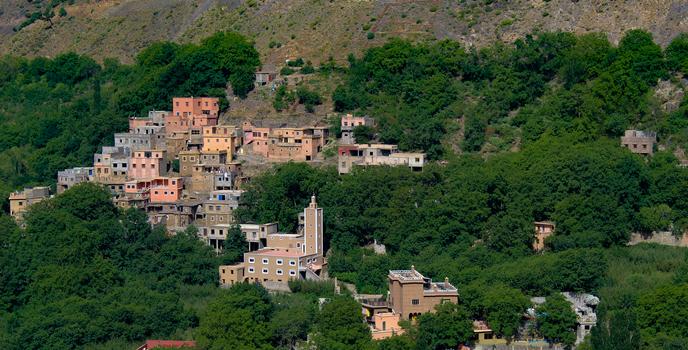
1. Jamaa el Fna: The Spectacle of Life
Your journey through Marakkesh starts at the vibrant Djemaa el-Fna square, pulsing with the excitement of social life. Vendors left and right offer enticing street food and refreshing orange juice, while less conventional businesses are run by snake charmers, fortune tellers, and henna artists. With the minaret of Koutoubia Mosque standing tall in the background, dancers and musicians flow back and forth in a constant celebration of Berber and Moroccan culture.
2. Medina: Mystical Maze
Endless alleyways and ancient streets make up the alluring center of Marrakesh. Within thick walls and behind the gorgeous gates of the riads, a frenzy of city life plays out as it has for centuries. The Souks, the largest ensemble of markets in Morocco, are dedicated to every product imaginable, from carpets to ceramics to fabric. Tanneries prepare perfectly dyed leather with traditional techniques, and the archaic Ben Youssef Madrasa school exhibits the pinnacle of Islamic art and architecture.
3. Majorelle Garden: Oasis in Blue
Garden and Museum at once, the Jardin Majorelle is divine. Twelve acres of local flora are landscaped against cobalt blue walls. Also home to a variety of fascinating birds, the gardens are a colorful treat for all living things. The Islamic Art Museum of Marrakesh also beckons visitors to appreciate the history that influenced the garden's pristine design. For those seeking peace and space over crowds the Menara Gardens offer a glorious alternative.
4. Bahia Palace: Place of All Intrigues
Islamic architecture reaches impressive levels of refinement in the 19th-century Bahia Palace. Let the beautiful symmetry of engravings and mosaics wash over you, and explore the vast and luscious harem once home to Grand Viziers and their countless wives. For a history lesson going even further back, visit the timeworn El Badi Palace, quiet and magical.
5. Toubkal National Park: Climb the Atlas
Berber communities have lived in the steep valleys of the Atlas Mountains for centuries, and hiking excursions from the city of Imlil take you in their footsteps, through old-age villages suspended in time. For ambitious mountaineers, the peak of Djebel Toubkal presents an exciting climb up the tallest point in North Africa.








Where to Eat in Marrakech
From multi-course meals served in palatial grandeur to delicious street food at bargain prices, Marrakech offers a full range of culinary options. Al Fassia is run entirely by women, and serves up traditional Moroccan favorites. Tagines start at DH140. Gastro MK, located in an ornate building in Medina, offers a menu of European-style cuisine, with a 5-course tasting menu that begins at DH650 per person. Cafes are everywhere, like the Bakchich, offering salads, sandwiches, and beghrir (like pancakes,) starting from DH15.
When to visit Marrakech
Marrakech enjoys a hot, semi-arid climate that sees dramatic temperature swings between day and night. Average daytime temperatures in July and August rise to just under 100 degrees Fahrenheit, making it a slower season for tourism. Spring and fall, with temperatures between 50 and 75 degrees Fahrenheit on average, see more tourists.
How to Get to Marrakech
Plane
Marrakech Menara International Airport (RAK) is located just over six miles from the Medina or old city center. Direct flights are available from many European capitals, while North American travelers typically have to transfer in Casablanca. Taxis are a good option to get to the city, and drivers will approach you as you exit the airport, competing for your business. Bartering is a must, and the one-way ride should run you no more than DH50-100. The number 19 airport bus is an inexpensive alternative at DH30 for a one-way ticket.
Train
The Marrakech railway station (Gare de Marrakech) is the last stop on the southern leg of the national railway line, connecting the city to Casablanca, Tangier, and Fes. Transfers are also available to destinations in Algier. It is located in the city center near the Royal Theatre.
Car
Marrakech is connected to the rest of Morocco via major highways and routes. Highway N8 (National Route 8) intersects with Marrakech from east to west, while N9 travels north to south. The A7 express route skirts the city to the west, leading from Casablanca to Agadir.
Bus
CTM, Pullman du sud, and Supratours are the major tourist bus companies operating in and out of Marrakech through the gare routière, or bus station, which is located outside the old city walls at Bab Doukkala. Connections are available to many cities and towns in Morocco, including Agadir, Casablanca, Fes, Rabat, and Tangier.
Airlines serving Marrakech
Where to stay in Marrakech
Medina - the oldest part and the true heart of Marrakech, this neighborhood is a must-see. This designated UNESCO World Heritage site is an intricate place of narrow streets full of historic tombs, monuments, mosques, cafes, and shopping in the oldest and largest souk in North Africa. It also incorporates Mellah, the ancient walled Jewish quarter of the city.
Popular Neighborhoods in Marrakech
Gueliz - this is the modern face of Marrakech. It is the home of the Royal Theatre and the new train station, along with the iconic Majorelle Gardens, a 12-acre botanical oasis that incorporates the Islamic Art Museum of Marrakech.
Hivernage - this modern neighborhood in the Ville Nouvelle district is home to stylish night clubs and lounges, and a thriving restaurant scene. Many of the city's newer luxury hotels and resorts are located here.
Where to stay in popular areas of Marrakech
Most booked hotels in Marrakech
How to Get Around Marrakech
Public Transportation
The city's public transportation network is called Alsa, with a central hub in Bab Doukkala. Bus service covers most of the city and beyond. Single-ride tickets within the city cost DH4. Tourist passes are available for DH145 for 24 hours, with a better bargain at DH165 for 48 hours.
Taxi
Taxi fares are negotiable by a bartering system. You may find several drivers arguing for your business, and you will be able to get a deal by persevering. A trip of about three miles should cost no more than DH40.
Car
Car rentals from Sixt and Medloc Maroc are available at the airport and in locations in the city, and start at about DH190 for a compact vehicle. Moroccan roads can be chaotic and unruly. Add to that the fact that many of the side streets are one way and driving becomes an option many tourists find they can do without. If you do drive, you'll find cheap parking in public lots at DH25 for a full 24-hour period, but parking in the city is at a premium most of the time.
The Cost of Living in Marrakech
Shopping Streets
Along with the lively souks of the Medina, you'll find many modern shopping opportunities along Avenue Mohammed V in the Gueliz area of the city, including the large Carré Eden Shopping Center and Menara Mall. Al Mazar, near the Agdal Gardens, is a modern shopping mall with movie theaters and a kids' play area. High-end designer shops are to be found in Sidi Ghanem, an industrial area of the city.
Groceries and Other
Supermarket chains in Marrakech include Metro, Marjane, Aswak Assalam, and Carrefour, offering the usual range of goods at reasonable prices. A gallon of milk should run about DH27, and a dozen eggs about DH14 on average. Corner shops are very common and sell staples like oil, tea, sugar, eggs, flour, and more.
